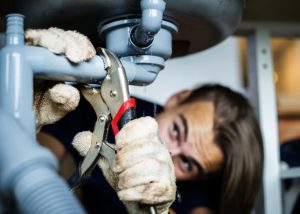Overview To Water Leakage Detection In Your Home
Overview To Water Leakage Detection In Your Home
Blog Article
We've found this great article relating to Hacks to detect leaks directly below on the web and concluded it made sense to write about it with you on my blog.

Early detection of dripping water lines can minimize a potential catastrophe. Aside from saving you cash, it will reduce the worry as well as irritation. The minute you find a leakage, calling your plumber for fixings is the best option. However, some small water leakages may not be visible. Below are some hacks that assist if you can not identify it with your naked eyes.
1. Check Out the Water Meter
Checking it is a surefire way that helps you find leaks. If it moves, that suggests a fast-moving leakage. This means you might have a slow-moving leak that could also be below ground.
2. Check Water Consumption
If you spot abrupt modifications, despite your intake being the very same, it indicates that you have leakages in your plumbing system. An unexpected spike in your costs suggests a fast-moving leakage.
At the same time, a stable rise monthly, despite having the exact same behaviors, shows you have a slow-moving leak that's likewise slowly intensifying. Call a plumber to completely examine your building, especially if you really feel a warm location on your flooring with piping beneath.
3. Do a Food Coloring Examination
When it comes to water intake, 30% comes from toilets. If the color somehow infiltrates your bowl during that time without flushing, there's a leak between the storage tank as well as dish.
4. Asses Outside Lines
Don't neglect to examine your outdoor water lines too. Should water permeate out of the link, you have a loose rubber gasket. One tiny leakage can lose heaps of water as well as spike your water costs.
5. Analyze the situation and also check
Property owners should make it a behavior to inspect under the sink counters and also inside cupboards for any bad odor or mold and mildew development. These two red flags indicate a leakage so timely attention is needed. Doing regular examinations, also bi-annually, can conserve you from a significant problem.
A lot more significantly, if you know your home is already old, maintain a watchful eye on your heating units, hose pipes, pipelines etc. Look for discolorations and also compromising as the majority of pipes and also appliances have a life expectancy. They will certainly also naturally deteriorate because of damage. If you suspect leaking water lines in your plumbing system, do not await it to escalate. Call a professional plumber right away so you don't wind up with a dreadful mess in your home.
Early detection of leaking water lines can reduce a prospective catastrophe. Some small water leakages might not be visible. Inspecting it is a proven means that aids you uncover leakages. One little leak can waste loads of water as well as surge your water expense.
If you presume leaking water lines in your plumbing system, don't wait for it to rise.
WARNING SIGNS OF WATER LEAKAGE BEHIND THE WALL
PERSISTENT MUSTY ODORS
As water slowly drips from a leaky pipe inside the wall, flooring and sheetrock stay damp and develop an odor similar to wet cardboard. It generates a musty smell that can help you find hidden leaks.
MOLD IN UNUSUAL AREAS
Mold usually grows in wet areas like kitchens, baths and laundry rooms. If you spot the stuff on walls or baseboards in other rooms of the house, it’s a good indicator of undetected water leaks.
STAINS THAT GROW
When mold thrives around a leaky pipe, it sometimes takes hold on the inside surface of the affected wall. A growing stain on otherwise clean sheetrock is often your sign of a hidden plumbing problem.
PEELING OR BUBBLING WALLPAPER / PAINT
This clue is easy to miss in rooms that don’t get much use. When you see wallpaper separating along seams or paint bubbling or flaking off the wall, blame sheetrock that stays wet because of an undetected leak.
BUCKLED CEILINGS AND STAINED FLOORS
If ceilings or floors in bathrooms, kitchens or laundry areas develop structural problems, don’t rule out constant damp inside the walls. Wet sheetrock can affect adjacent framing, flooring and ceilings.
https://www.servicemasterbyzaba.com/blog/how-to-detect-water-leakage-in-walls/
.jpg)
Do you really like reading up on Top leak detection hacks? Make a remark below. We'd be delighted to know your ideas about this piece. We are looking forward to see you back again in the future. You should take the opportunity to distribute this blog if you appreciated it. Thanks a lot for your time. Visit us again soon.
Report this page